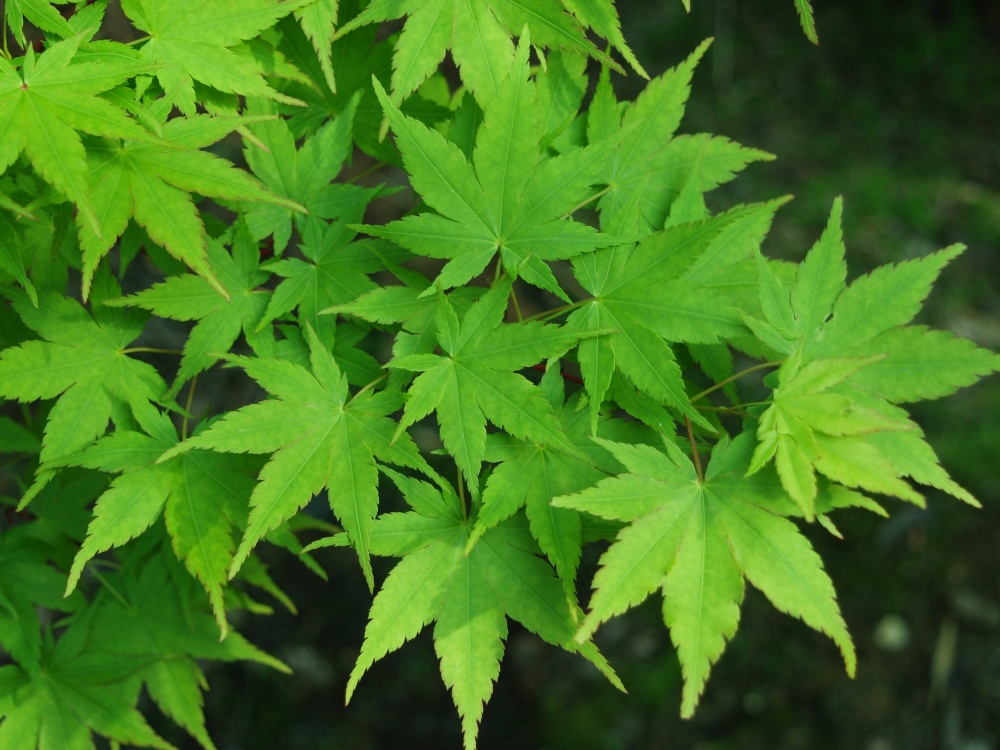
After a harsh winter there is small consolation that the garden’s Japanese maples (Acer palmatum) have suffered little by comparison to the long established dwarf hemlock and Hinoki cypress that have been cut out and discarded. Evergreen magnolias could be the next to go, and I await the verdict on several crapemyrtles that are tardy in leafing. A number of smaller tragedies will require months and years to rejuvenate.
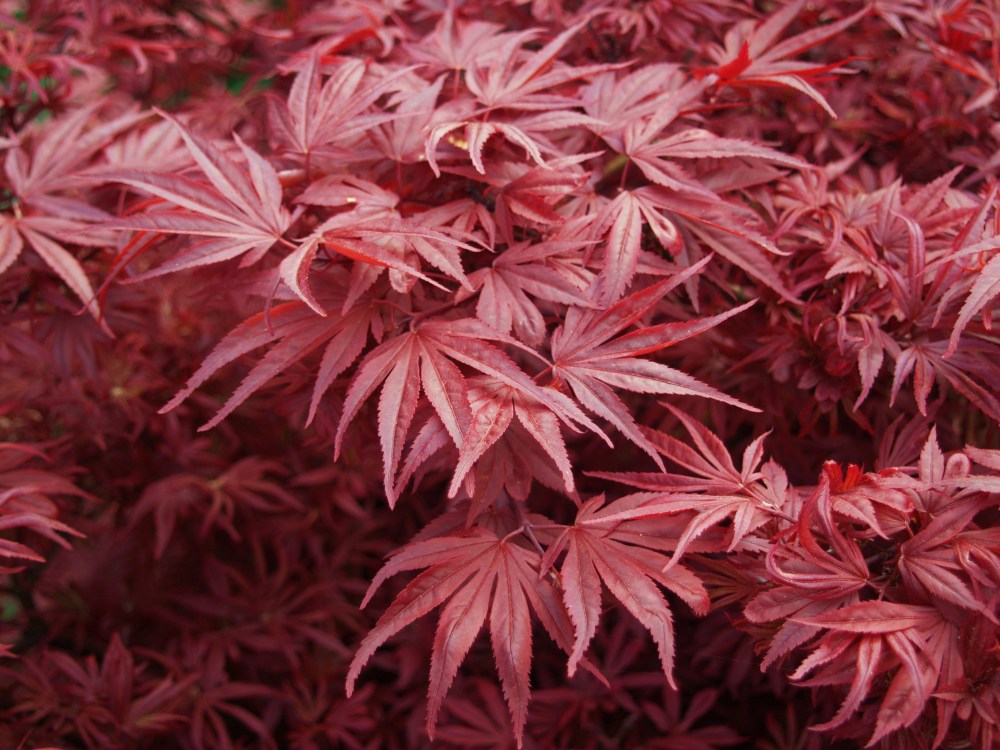
The top two-thirds of the dwarf Japanese maple ‘Shaina’ (above) died inexplicably, though the lower third is as healthy as ever. It pained me terribly to saw the thick limbs of the maple to remove the dead, but I was pleasantly surprised by foliage growing inside the dense canopy that will perhaps fill the void of the missing top sooner than expected. Still, this is not a one year project, though now I have hope that with growth next spring the shrubby tree will not appear so awkward. I’m willing to allow some leeway to provide a prized Japanese maple the opportunity to recover. Other trees might not be so fortunate.

The massive, pendulous ‘Crimson Queen’ maple (above) along the drive gave me a scare. Much in the manner of ‘Shaina’, the top was delayed in leafing, and though the branches were green beneath the bark, I feared that some root or stem damage would severely diminish this treasured tree. Slowly, the bare branches have leafed, though when all is settled in a few weeks I’m certain that a round of minor surgery will be required to clean out some dead.


In any case, damage will be minimal to this Japanese maple that has suffered enough for one tree’s lifetime. Twenty-five years ago the ‘Crimson Queen’ was planted along the front walk, but in my haste to fill the young garden, the maple was planted much too close, and soon it grew too far into the flagstone path. Finally, I realized the error of my ways, and determined to salvage this valued maple, I decided it must be transplanted.
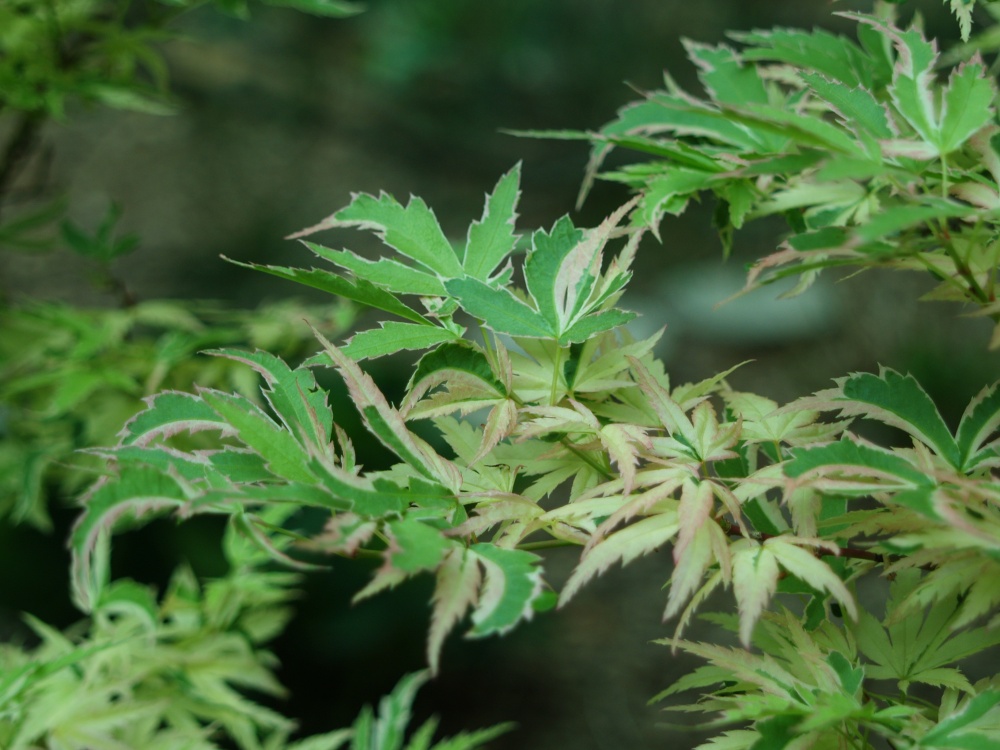
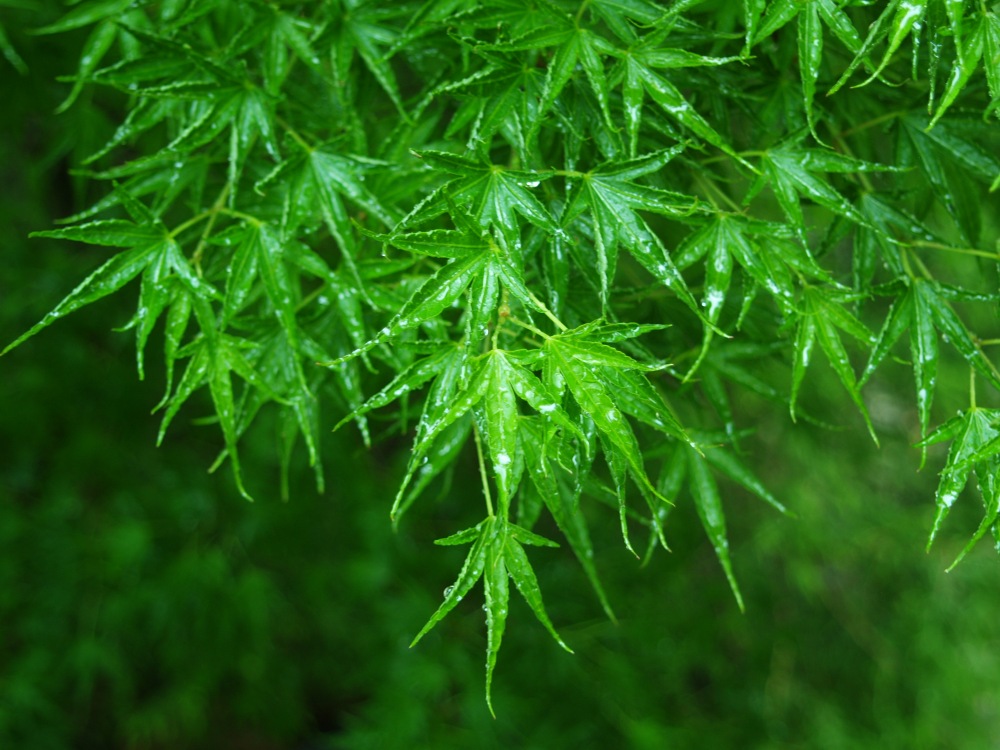
But, by now the tree had grown too large and spread too wide for one person to manage the transplant, so I did what any desperate gardener would do. I hooked a chain to the frame of my little convertible, wrapped the other end around the partially dug out rootball, and jerked it out. Worked like a charm! After a year the Japanese maple made a complete recovery, and now it grows into the driveway by several feet to deter any delivery drivers from venturing down to the garage.
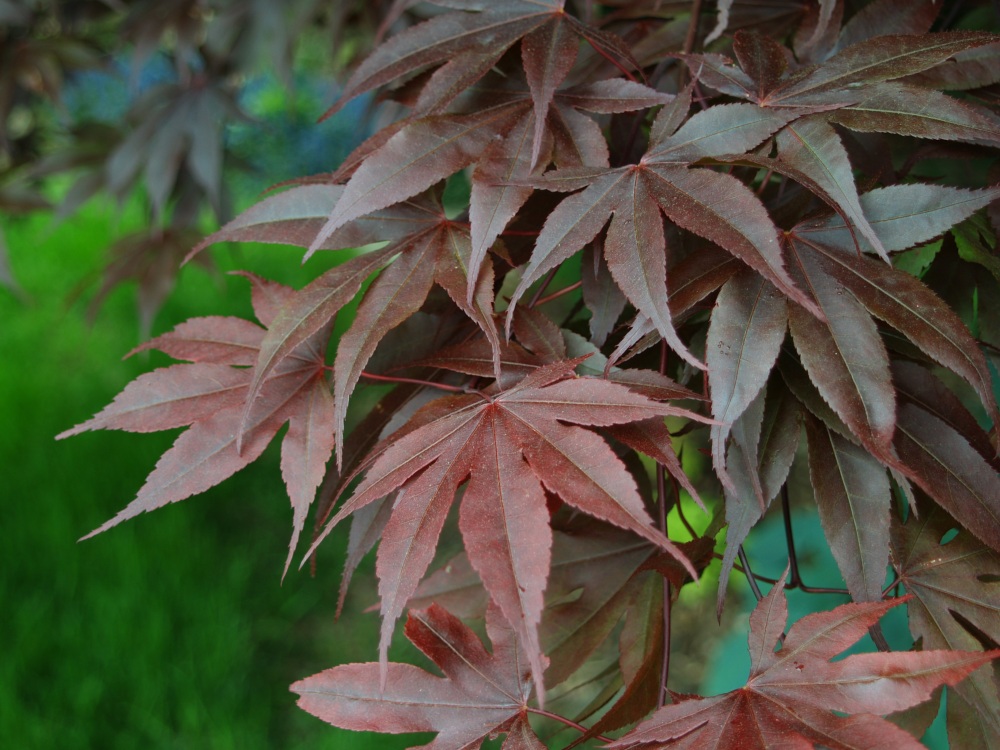
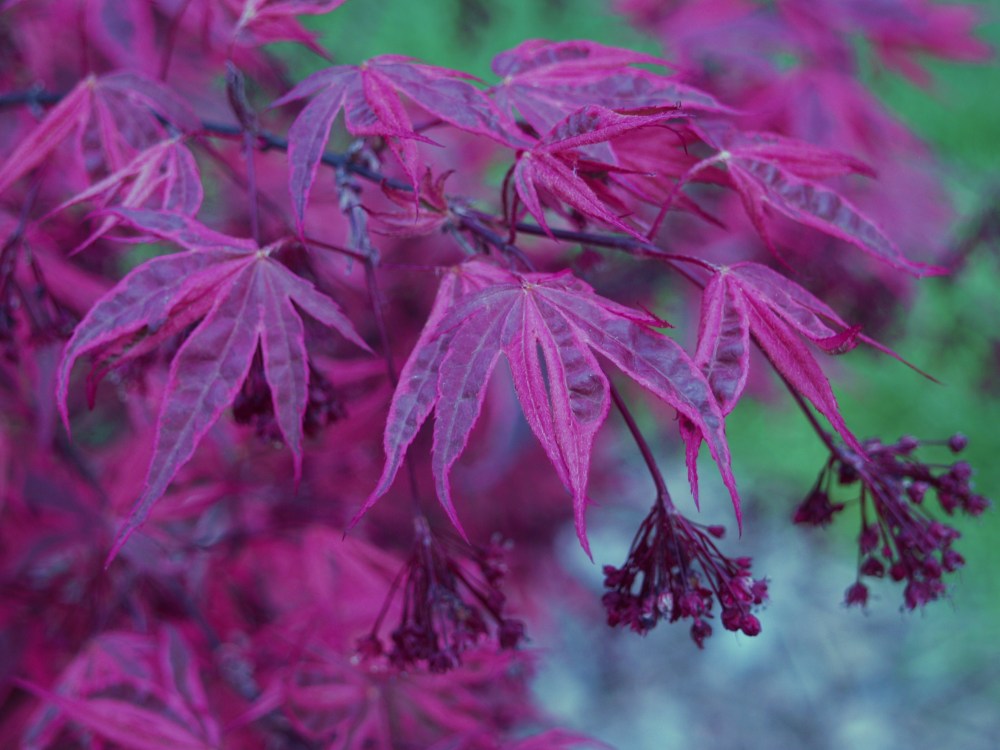
My collection of Japanese maples began innocently enough. Through the years, a few Japanese maples planted in this acre and a quarter garden became a handful, and as the budget for trees was disregarded, others were added as the garden increased significantly in size. There have been no checklists, and certainly there is no grand design that dictated that any number of Japanese maples be planted. It just happened, innocently or not, and the question is, if one or several are good, are twenty-four varieties better?

We will not ask my wife, who demanded that I stop after the first two or three maples were planted. There is little doubt where she stands, though I hold faint hope that this is a game to her, and she secretly looks forward to my next purchase. In any case, there are many worse vices, and she forgives quickly enough that I’m not discouraged when another fabulous maple catches my eye. Certainly, I do not ask for her approval prior to a purchase, and often a new maple just appears in the driveway. Yes, she squawks, but that’s harmless enough not deter my important work.
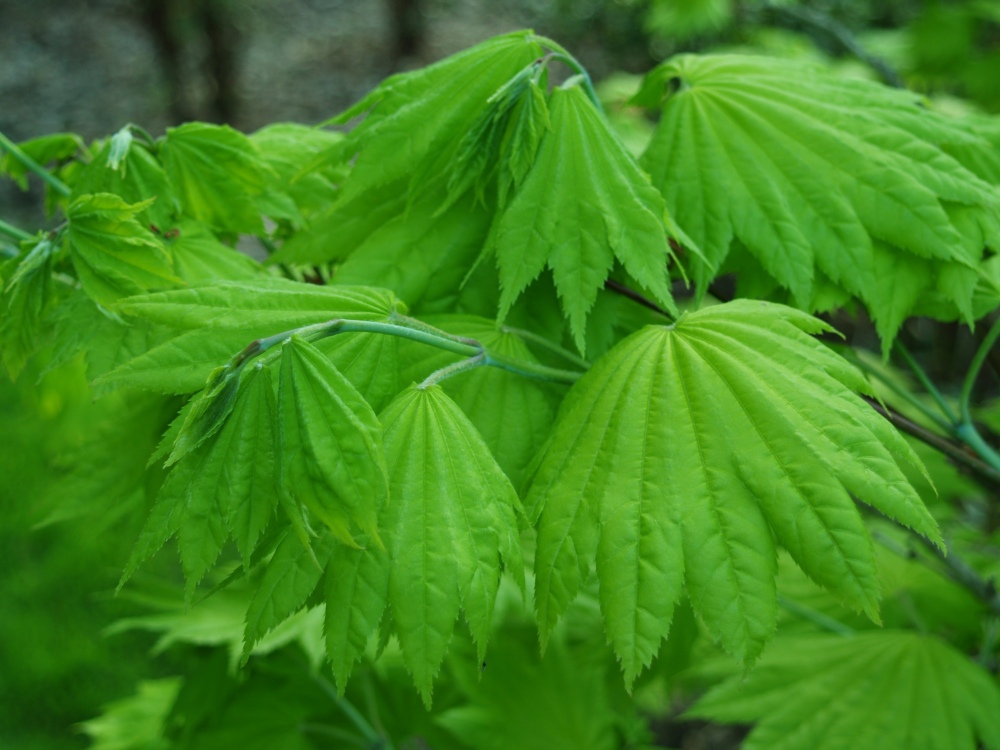

Certainly, there are many gardeners with no desire for such a collection, and in recent years some have declared Japanese maples to be invasive, and planting even one is criticized. In fact, the maples seed prolifically in any average, moist garden soil, and I spend considerable time plucking out hundreds of seedlings. But, the seedlings don’t stray far, and I’ve never seen one growing in the forest that borders the garden, or in the fields beyond, so I will happily grow my Japanese maples without fear that they will invade the native flora.
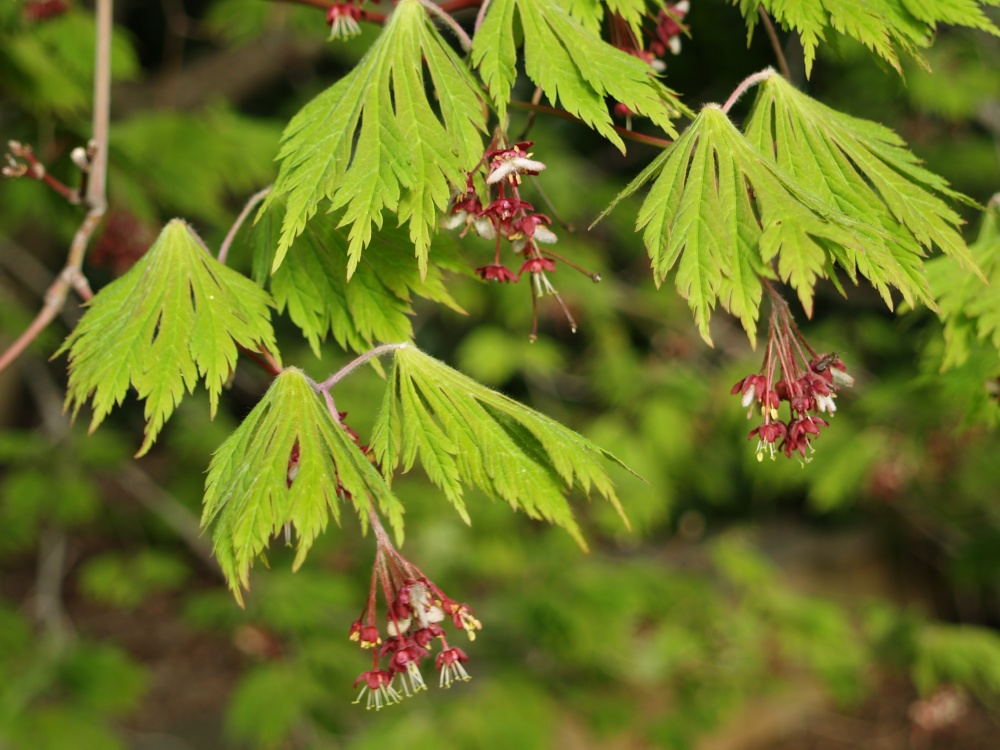
There are a few hundred Japanese maple cultivars in commerce, but only a handful or two are very common. None in my garden are rare, though a few are a bit out of the ordinary. I am most pleased that many of the maples have grown to become robust and wide spreading trees that shade paths or overhang ponds, and it’s bothers me very little that the shade has drastically cut down on the garden’s few spots of sun. A few fading perennials are a small price to pay for such magnificence.

Of course, there is nothing confounding about growing Japanese maples. These are simple trees to grow, demanding nothing more than a bit of sun, and soil that is not waterlogged. Even in damp soils, where a variety of shrubs continually fail, Japanese maples thrive so long as the ground dries out every now and again.

Occasionally, I hear non-gardeners (I presume) proclaim that Japanese maples are difficult to grow, and more frequently that they are slow growing. Certainly, I expected that the crinkled leaf Lion’s Head maple (Shishigashira’, above) would take forever to reach head high when I planted a waist high tree, but after a slow first few years one tree jumped quickly, and a second planted a year later in more sun passed it and now tops ten feet. This is not a notable tree to many, but I am overjoyed to include the two charming maples in the garden.
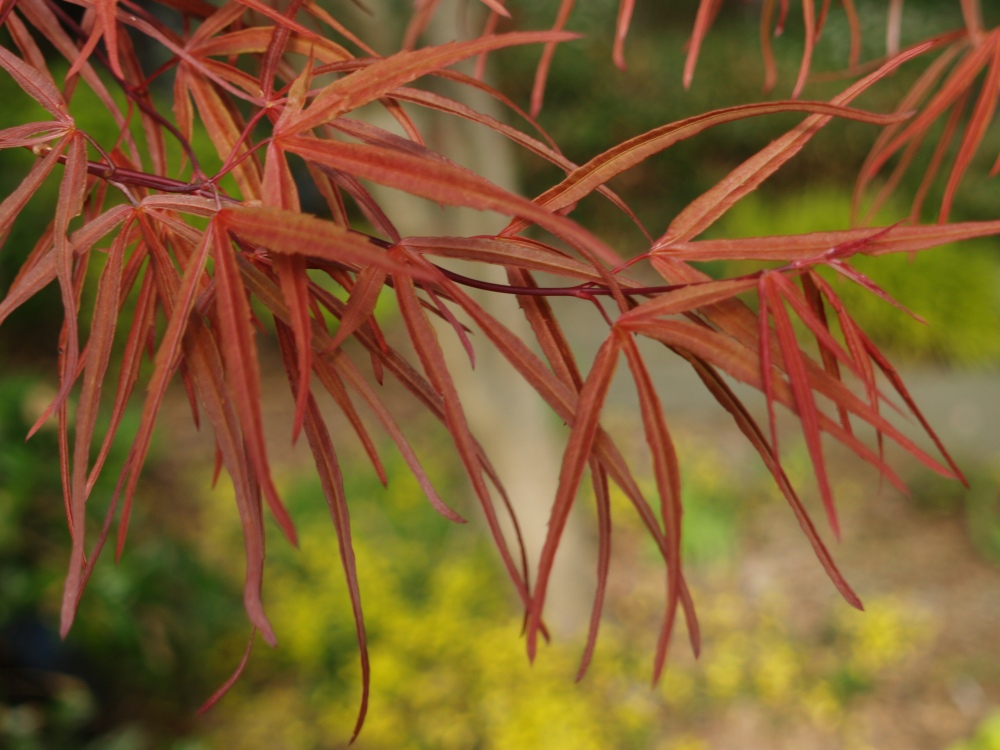
Unfortunately, space in this garden is running short, but when an aged hemlock is killed in the winter, it is quickly replaced with a long lobed Scolopendrifolium maple (above). The Hinoki cypress that perished is chopped out, and a few feet away a second Floating Cloud maple (‘Ukigumo’, below) is planted. Some joy has finally come from this season’s calamities.
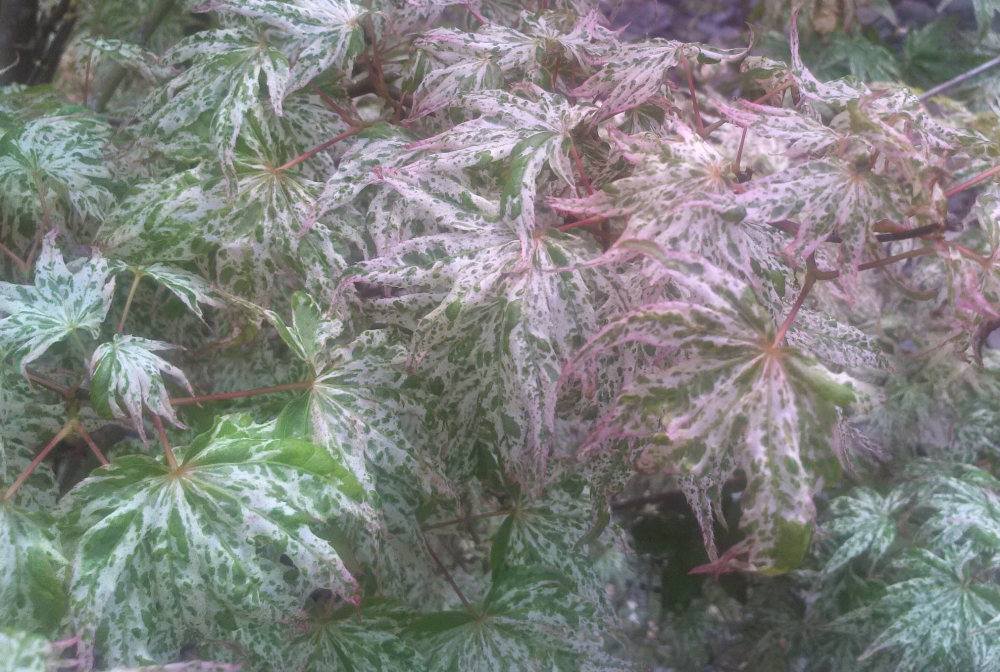
Attended the Bonsai show at the National Arboretum last month and, while but a budding enthusiast, was blown away by the gorgeous Japanese Maple creations. Curious if you have delved into this hobby and, if so, what types of Japanese Maples you found particularly suited to this technique? Seedlings would never be refused.
🙂
I fear that I am not up to task of bonsai. Certainly, any gardener should be enormously impressed by bonsai done well, and precisely the reason that I grow Japanese maples is the reason I would not take up bonsai. Maples are exquisite trees that grow well with very little effort.
What gorgeous Japanese maples! I need to get rid of more lawn to squeeze. I have the not unusual Bloodgood and Crimson Queen as well as a couple of weeping ones but I would really like to get Sango-kaku (Spelling?) and the floating cloud one.
The coral bark maple (‘Sangu-kaku’) is the most problematic of Japanese maples, and many gardeners experience more twig dieback with it than other maples. For Japanese maple growers it is susceptible to diseases that do not trouble other maples, though I have found it to be trouble free in my garden. I have featured coral bark with the header of my story, but most often I find its foliage to be dull by comparison to other maples. Still, the winter stem colors are undoubtedly dramatic.
Your collection of Japanese maples is beautiful . I especially like, “Gwen’s rose delight” because that’s my daughter’s name. Where might I acquire that variety?
The marketing name for “Gwen’s” is Shirazz. Shirazz was a proprietary plant until a few years ago, so it is not widely distributed. Meadows Farms garden centers stock it off and on when there are plants of decent size, but I don’t think there are any this year.
Those are some extraordinary specimens. You mentioned not having any particularly rare varieties. What varieties are out there that are?
A few of the Japanese maples that I’ve planted that are not so common are the Floating Cloud (Ukigumo), Lion’s Head (Shishigashira), Shaina, both red and green Scolopendrifolium, Linearalobum, and the Golden Full Moon maple. Most often, if these are found in a garden center they are in very small sizes. These, and many other varieties are available from several mail order nurseries that specialize in Japanese maples. Even though they grow fairly quickly, I’m not patient enough to wait six or seven years for a decent sized tree.